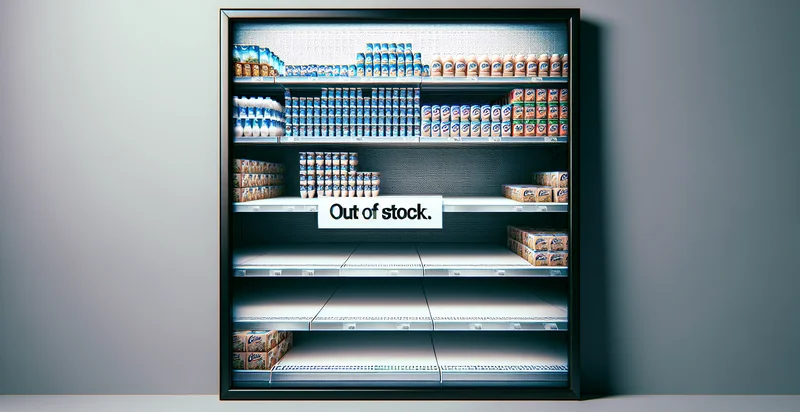Identify if item is out-of-stock
using AI
Below is a free classifier to identify if item is out-of-stock. Just upload your image, and our AI will predict if the item is out-of-stock - in just seconds.

Contact us for API access
Or, use Nyckel to build highly-accurate custom classifiers in just minutes. No PhD required.
Get started
import nyckel
credentials = nyckel.Credentials("YOUR_CLIENT_ID", "YOUR_CLIENT_SECRET")
nyckel.invoke("if-item-is-out-of-stock", "your_image_url", credentials)
fetch('https://www.nyckel.com/v1/functions/if-item-is-out-of-stock/invoke', {
method: 'POST',
headers: {
'Authorization': 'Bearer ' + 'YOUR_BEARER_TOKEN',
'Content-Type': 'application/json',
},
body: JSON.stringify(
{"data": "your_image_url"}
)
})
.then(response => response.json())
.then(data => console.log(data));
curl -X POST \
-H "Content-Type: application/json" \
-H "Authorization: Bearer YOUR_BEARER_TOKEN" \
-d '{"data": "your_image_url"}' \
https://www.nyckel.com/v1/functions/if-item-is-out-of-stock/invoke
How this classifier works
To start, upload your image. Our AI tool will then predict if the item is out-of-stock.
This pretrained image model uses a Nyckel-created dataset and has 2 labels, including In Stock and Out Of Stock.
We'll also show a confidence score (the higher the number, the more confident the AI model is around if the item is out-of-stock).
Whether you're just curious or building if item is out-of-stock detection into your application, we hope our classifier proves helpful.
Related Classifiers
Need to identify if item is out-of-stock at scale?
Get API or Zapier access to this classifier for free. It's perfect for:
- Inventory Management Optimization: Businesses can leverage the out-of-stock identifier to streamline their inventory management processes. By receiving real-time alerts for items that are low or out of stock, companies can proactively manage replenishment and reduce lost sales due to stockouts.
- E-commerce Platform Alerts: Online retailers can integrate the out-of-stock identifier to inform customers about unavailable products instantly. This feature enhances user experience by allowing shoppers to receive timely notifications and offering alternatives, thereby reducing frustration and potential cart abandonment.
- Supply Chain Efficiency: Companies can utilize the out-of-stock identifier to enhance supply chain visibility and responsiveness. By identifying stockouts early, logistics teams can expedite orders and manage supplier communications more effectively, ensuring timely delivery of goods.
- Dynamic Pricing Strategies: Retailers can use the out-of-stock identifier as part of their dynamic pricing strategy. When items are identified as out of stock, businesses can adjust prices on similar in-stock items, capitalizing on demand fluctuations and maximizing revenue.
- Data-Driven Marketing Campaigns: Marketers can analyze out-of-stock data to inform future promotional campaigns. By understanding which products frequently run out, businesses can promote these items with preemptive marketing efforts, potentially increasing sales when they are back in stock.
- Customer Satisfaction Enhancement: The out-of-stock identifier can empower customer service teams by providing accurate, real-time information about product availability. This transparency allows customer representatives to assist shoppers more effectively, answering queries about restock timelines and expected availability.
- Predictive Analytics for Demand Forecasting: Businesses can utilize historical out-of-stock data alongside other sales metrics to improve demand forecasting models. By understanding patterns and trends in stockouts, organizations can adjust their inventory strategies to better align with customer demand and prevent future shortages.


